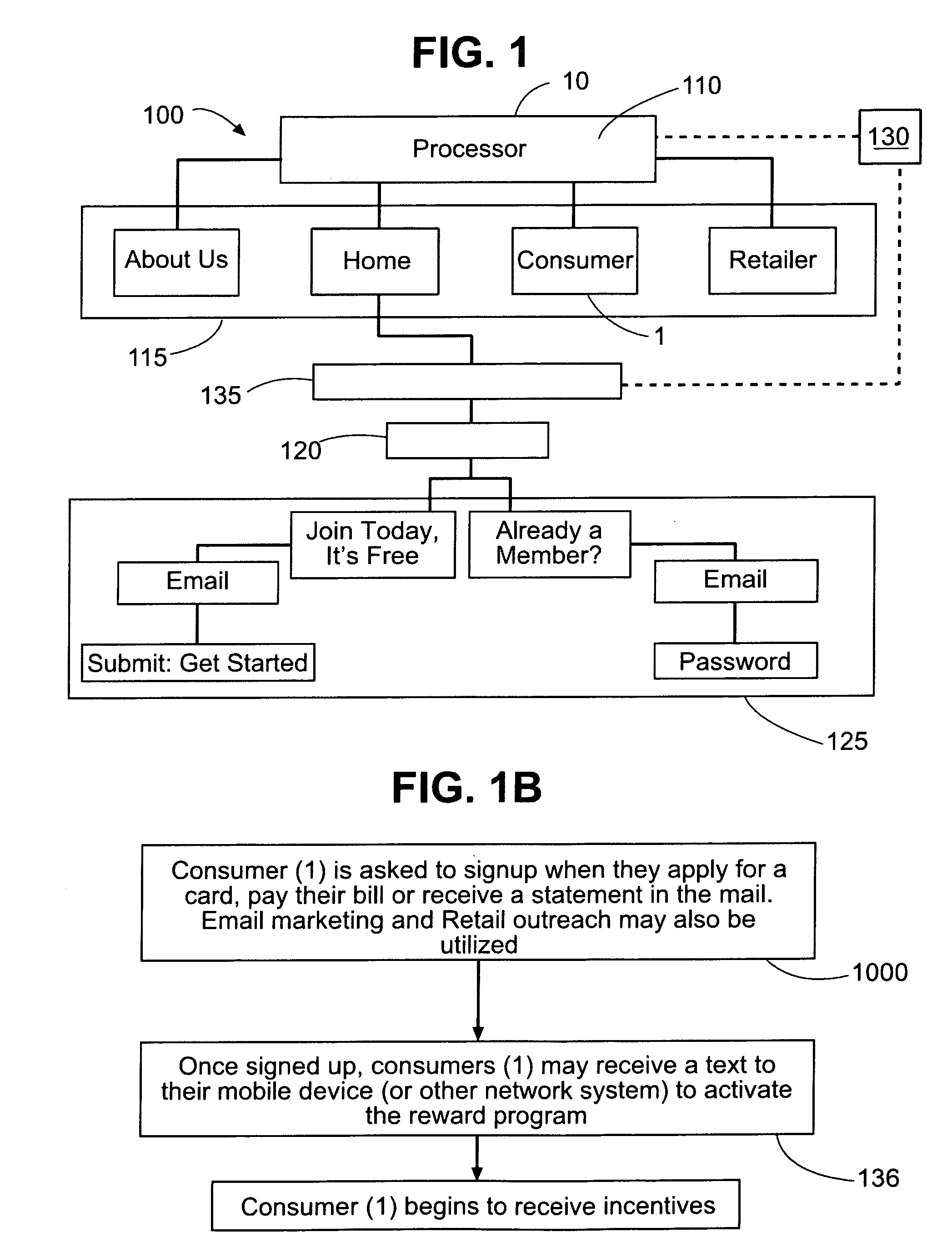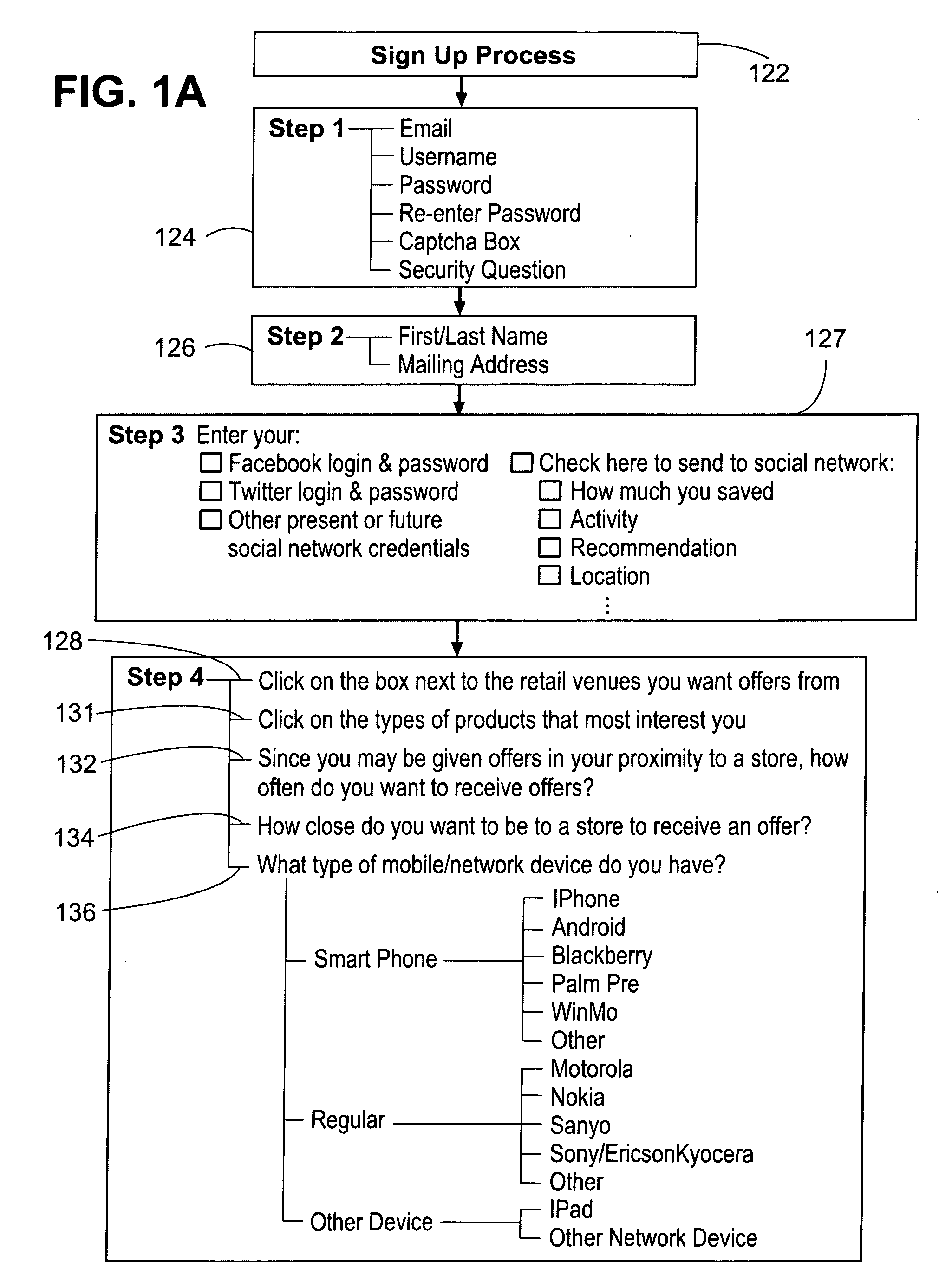However, there can also be different classes of coupons based upon the identity issuing authority (i.e. manufacturer or retailer), whether the coupon is targeted to a set of potential customers or untargeted, and whether the number of coupons to be distributed is limited or unlimited.
They are unable to view offline or in-store offers without being associated with an
issuing bank or other institution.
Although they might want to provide in-store merchant benefits, they are generally not capable of doing so and are only capable of offers that are a flat percentage.
However, they rely on bar coded delivery, thus forcing
point of sale (“POS”) revisions, either by manual entry of the coupon specifics or a change in the hardware or
software at thePOS.
However, the retailer continues to be intimately involved in the redemption and clearing process, thereby increasing the
error factor and cost to the retailer.
It may also result in customer dissatisfaction in the event that the retail employee does not properly input data or otherwise causes the clearing to be delayed.
This is not expected to happen until retailers install NFC readers in retail outlets.One of the most significant challenges for
barcode-based mobile coupon solutions is the implementation of new scanning hardware at the retail POS.
Such hardware is expensive to install; moreover, the lack of volume has not yet been able to justify the investments in such solutions.
This has been a major cause for the limited adoption of mobile coupons at the retail POS.
While the Axler patent permits an operator to periodically “visit” a dispensing
machine, this does not allow “real time” interactivity (e.g., it does not permit the operator to access and analyze demographical data contemporaneous with its input).
This continues to result in the creation of ads and coupons that may be of no significance or use to
consumer or which may not be effectively accessed by the
consumer at the time they are needed or wanted (e.g. during the redemption process).
They solve the issue of targeted, limited online distribution and redemption of electronic coupons at a single online store, but it is not clear how they can
handle coupons issued by a manufacturer which may get redeemed at any online store, nor does it disclose any redemption process which by-passes the traditional active involvement of the retailer or permits issuer based redemption in a matched offer context.
But none of these systems are doing any targeted discounts; they are just giving discounts on the customer purchases without issuing any coupons to the customer at all, hence they do not describe any coupon distribution, redemption or
verification mechanisms.
This does no targeting and is only limited to one form of coupons i.e. transaction points and is not a solution for a generic coupon that can be in the form of price-packs, cross-selling, gift certificates, and the like, nor does it do any redemption which reduces the retailer involvement in the redemption or
verification process
The limitation of these systems is that they only talk about physical stores and the user has to carry a
smart card.
However, consumers are not always on
the Internet and often are in situations where an advertiser would wish to attract consumers to their product, build brand identity, and make sales.
For example, persons in malls are often there to spend money, but may not be aware of a sale in a particular department store.
However, privacy remains a concern, as many people do not like the idea of being “tracked”.
While consumers can save money-using coupons, many do not think the effort is worth it.
This
system, however, does not enable the individuals to provide word of mouth sales referrals by including marketing brands as part of the individual's identity in the
database.
However, each of the above systems, as well as traditional e-commerce suffer from the lack of relevant feedback from trusted sources.
However, this
system does not provide advertisers with the immediate use of coupons or the
dissemination of those coupons among social group members, nor does it provide redemption which minimizes or eliminates the retailer involvement, while permitting the use of existing data and communication streams and device without the need to obtain new hardware.
 Login to View More
Login to View More  Login to View More
Login to View More 


